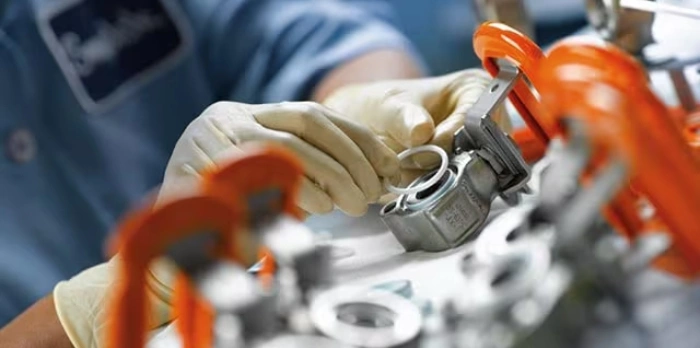Valve selection is an important component of proper design and maintenance practices for industrial, piping, and instrumentation systems. Without the right valve for a specific application, operators can face improper or inferior fluid system performance, increased downtime, and avoidable safety risks. Therefore, it is particularly important to select the right valve from the beginning to help operators avoid premature valve replacement later.
How do you make the right choice?
To properly select valves, designers and technicians can follow the STAMPED approach, which considers size, temperature, application, media, pressure, ends or fittings, and delivery. Considering each of these operating conditions can guide industrial fluid and analytical sampling system professionals in selecting the right valve.

The following explains how to apply STAMPED to your fluid system design:
S: Size
The size of a valve determines its flow capacity, which needs to correspond to the desired (or required) flow rate of the system. Manufacturers will provide a flow coefficient (Cv) that represents the relationship between the pressure drop across the valve and the corresponding flow rate.
Valve design factors that affect Cv include the size and geometry of the flow path; the orifice size of the valve affects the fluid flow through it. The larger the orifice, the greater the potential flow rate. Orifices can vary greatly between different types of valves; for example, a ball valve will offer little flow resistance, but a needle valve will restrict or slow the flow rate. These should be considerations in your selection process.
T: Temperature
Keep in mind the operating temperature of your valve. This includes the temperature of the system media your valve will help control, as well as the ambient operating temperature of the surrounding environment. Ask yourself, “Will these temperatures remain constant, or will they change frequently?” These conditions may affect your valve selection or how often you need to perform preventative maintenance.
A: Application
Think about what the valve needs to do in your system. Do you need to start or stop the flow of media? Regulate flow levels? Control flow direction? Protect the system from over pressure?
Your answers to these questions will guide the type of valve you choose for your design. Again, let’s take a simple two-way ball valve as an example. Although some ball valves from other manufacturers offer throttling capabilities, most ball valves should not be used to throttle or regulate flow, but rather to be used in either a fully open or fully closed position. If throttling or regulating flow is your goal, a needle valve or metering valve may be a better choice.
M: Media
When you’re trying to choose the right valve with the appropriate material composition, you should also carefully consider the fluid media inside your system. Make sure the system media is compatible with the materials that make up the valve body, seats, stem tip, and other softer materials. Incompatibility can lead to corrosion issues, embrittlement, or stress corrosion cracking—all of which can present safety risks as well as costly production issues.
As with temperature, you should also consider where the valve will be used. Will it operate in a climate-controlled environment, such as inside a plant or heated instrument enclosure? Will it be used outdoors, exposed to climatic factors such as direct sunlight, rain, snow, frost, ice, and temperature fluctuations? Marine environments with significant exposure to chlorides? Valves and their components come in a variety of materials. Choose a valve that is appropriate for these factors to maximize the life and functionality of the valve.
P: Pressure
Pressure is another important consideration when selecting a valve. Note the two contexts in which this term is used:
Working Pressure: The normal operating pressure in your system.
Design Pressure: The maximum pressure limit provided by the valve manufacturer; never exceed the design pressure of any fluid system component except under controlled test conditions.
E: End Connections
Valves come with a variety of different end connections. These may be integral tube fittings, pipe threads, pipe flanges, welding ends, etc. Although not traditionally associated with the construction of a valve, the choice of end connections is critical to the overall construction of the valve and its ability to maintain a sealed system. Make sure your end connections are appropriate for your system pressure and temperature, and are the right size - the right end connections can simplify installation and avoid additional leak points.
D: Delivery
After considering all of these factors and selecting the right valve for your application, ask yourself, "When do I need the valve? How many do I need?"
Like any other factor, on-time delivery and reliable supply are important to keeping your fluid system running and efficient. As the final step in the STAMPED methodology, review your suppliers. Are they available when you need parts? Are they easy to contact? Will they work with you to understand your system needs?
Valve selection is essential to designing a safe, efficient fluid system.